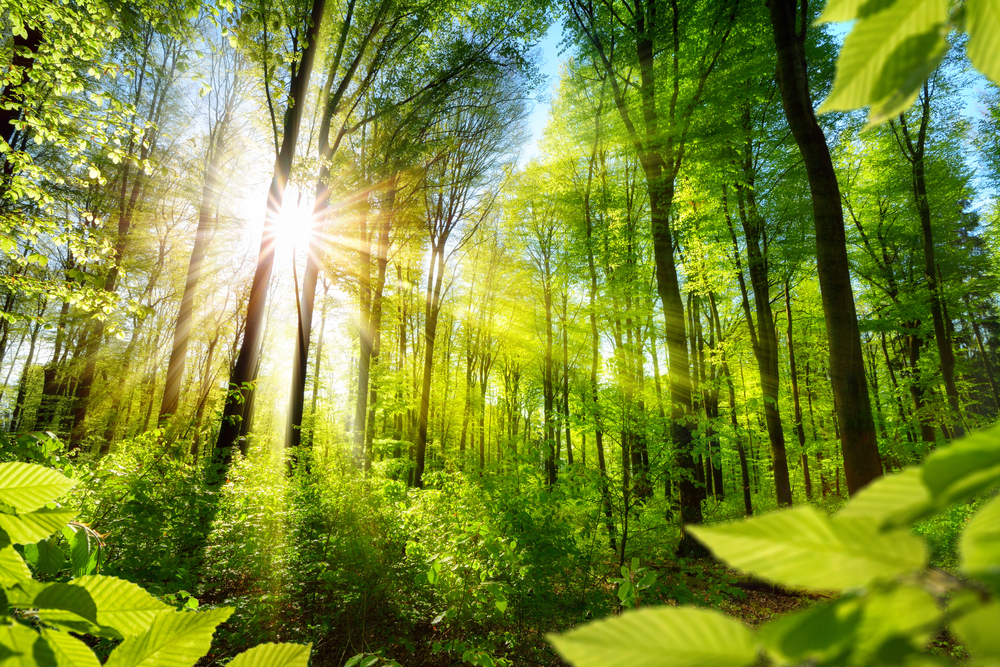Arbor Day and forests: The false choice between the environment and the economy
We often feel forced to choose between the environment and the economy. Public debates can leave us thinking we have to decide whether to take action on climate change or support rural economies, and that we can’t possibly do both.
Or, can we? What if we took a clear-eyed look at the choices in front of us? What if economic and environmental interests were not only mutually dependent, but mutually sustainable?
We usually celebrate Arbor Day by planting a single tree. This year, let’s broaden our view to celebrate, appreciate and support the entire forest instead, where economic and environmental benefits align.
The environmental contributions of our forests are immense. Forests in the United States offset 12-15 percent of our total emissions each year. Nearly 360 million acres of our forests are privately owned and managed. These forests provide 30 percent of our drinking water and are home to a wide variety of wildlife. The wood from these forests extends the environmental value of the trees, through long-term carbon storage in buildings and the displacement of more fossil fuel intensive materials like plastic, steel and concrete.
While our private working forests are sequestering and storing millions of metric tons of carbon every year, a new report shows that they are also supporting a staggering 2.5 million jobs and $109 billion in payroll – mostly in rural communities that need the economic support. Private working forests account for $288 billion dollars in sales and manufacturing each year, which is greater than the entire GDP of Connecticut.
Policymakers on both sides of the aisle are beginning to hold hearings, gather information, and develop ideas on how the federal government should address climate change. A central question they should consider is this: how do we harness the environmental benefits of working forests without placing the economic burden on the rural communities that depend on them? The answer will require strong bipartisan support based on a common set of facts.
Perhaps the most important fact is this: forests are the most powerful carbon sequestering technology in existence. Climate mitigation proposals from both parties have correctly identified the vital role of forests. The United States has great potential in its abundant, productive, healthy forests and realizing that potential starts with keeping them healthy and intact.
Research shows that the greatest threat to our nation’s forests is conversion to non-forest uses. Forest owners invest millions of dollars in replanting, road maintenance, and forest health treatments to prevent fire, insect infestation, and disease. When forest owners cannot realize a return on their investments, they face enormous economic pressure to turn their forestland into something else that will provide an economic return, like agriculture or development. If we want forests that stay, we need forests that pay.
If the concept of using more wood to protect forests seems counterintuitive, consider how market forces work. When we build a home or buy furniture made of wood, or use a cardboard box to send a gift, a part of the money we pay finds its way back to the forest owner. hat money is the return on investment that enables a forest owner to plant more trees and care for the forest. Strong demand for wood is the economic armor protecting privately owned working forests.
These market forces dovetail nicely with the scientific reality that solid wood continues to store the carbon captured in growing trees – an enormous and undervalued environmental benefit. The wood in our homes and buildings, kitchen tables and decks is storing carbon and fighting climate change. A strong climate change policy will recognize the importance of carbon storage in long-lived wood products, in addition to the active carbon capture in vigorously growing working forests.
Today, the United States leads the way in modern forestry, in large part because we value the products our forests produce. The latest data shows that private forest owners grow 43 percent more than they harvest each year. That is a climate friendly practice we can all applaud.
There does not have to be a choice between environmental and economic benefits when it comes to working forests. When we choose sustainably sourced, renewable forest products, we are valuing forests and preventing deforestation. When we build with wood, we store forest carbon. When policymakers support market-based approaches that support the environmental and economic benefits of working forests, they are helping to improve both the climate and communities.
What if we realized that environmental sustainability without economic sustainability isn’t sustainable at all, and vice versa? Let’s show that we do.
This Arbor Day, let’s do more than plant a single tree. Let’s support the entire forest.

